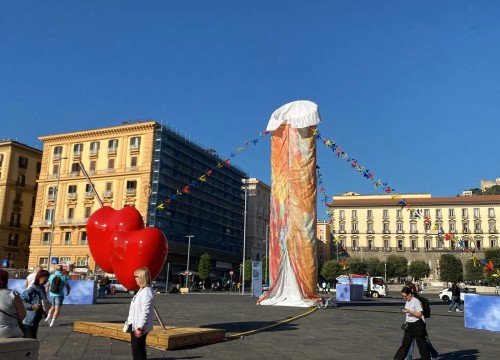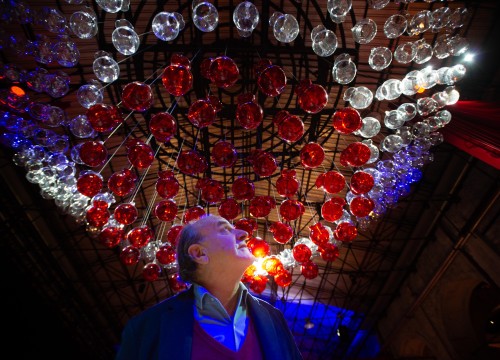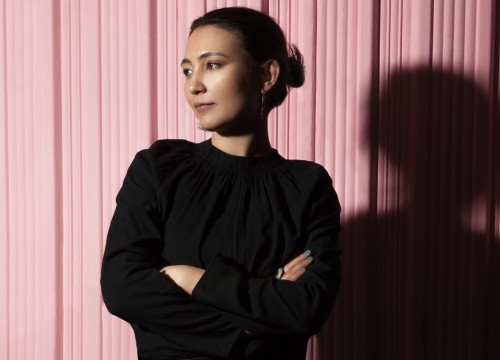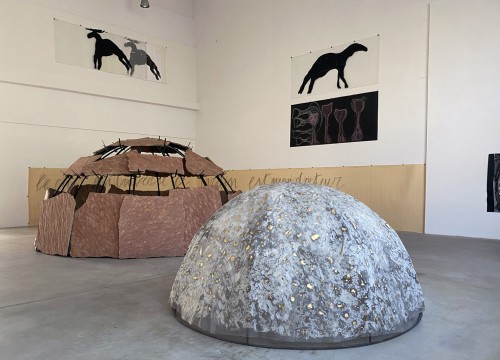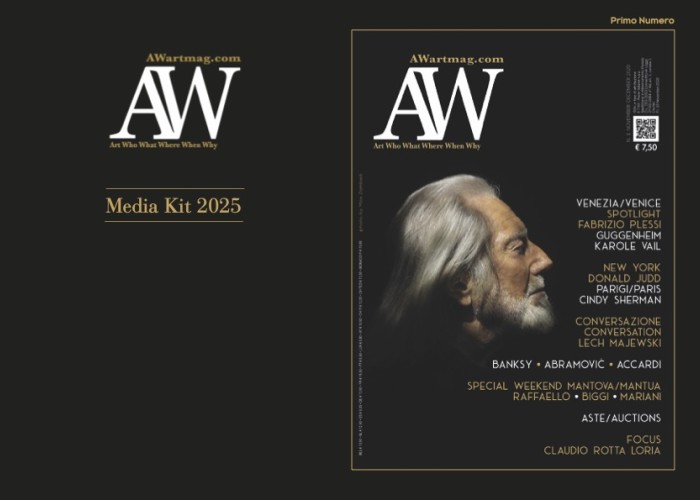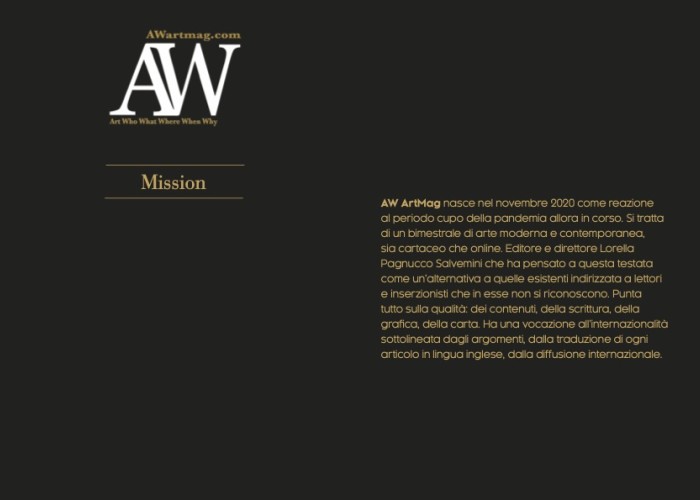Three intense videos pay homage to St. Teresa of Avila
Unlike other artists who stopped performing in the 1980s, Marina Abramović – or “the grandmother of performers”, as she likes to call herself – was able to earn a prestigious place in the Olympus of performance art. She challengingly pushed the complicated relationship between artist and public going as far as wounding her own body and walking the boundary line where risk activates that sensory energy that focuses on survival in the present moment. With “The Rhythm”, a series of works dating from 1973-74, she started exploring pain tolerance as an instrument of knowledge and resistance as a barrier to vulnerability. In 1974, at studio Morra in Naples, she gave her body to the sometimes very violent actions of the public, verging on the grotesque.
Grown in Tito’s communist Belgrade, in her autobiography, which is called “Walk through Walls” (2016), she discloses her “desperately clumsy and unhappy” adolescence and her “training” to resist physical and psychological suffering. In 1987, after 12 years of artistic and sentimental partnership with German performer Ulay (who recently died), she resumed working alone. In 1997, she was awarded the Golden Lion at the Venice Biennale. In 2010, her first major retrospective took place at MoMA in New York. Shortly after that, she founded the MAI (Marina Abramović Institute) to promote performing art.
At the heart of these works childhood memories, the bond with her grandmother, the dialogue with death
After taking place at the Ambrosiana in Milan, “Ecstasy” brings the artist back to Naples. The exhibition runs at Castel dell’ovo and features three videos from the “The Kitchen. Homage to Saint Therese” series, which relates to the 2009 project that took place at the former convent in Gijón, in Spain. In these works, the wounds of the body give way to a different dimension that includes everything: Marina’s childhood memories; the salvific bond with her grandmother, Milica; her dialogue with death; her investigation – on the trail of St Teresa of Avila’s writings – into how the intense anguish of the spirit can join with immense joy in ecstatic rapture. In the opening video, Vanitas, the artist’s hands touch a skull, in memory of all the things that cyclically begin and end.
The kitchen – seen not just as an intimate place of daily work but also as a metaphysical turris eburnea – is the setting of the other two video installations, Holding the milk and Levitation. In the former, astonished stillness is interrupted by some milk dripping from a brim-full container, also in memory of our human essence. In the latter, the figure of the ar tist with her arms open rises/ levitates in the middle of the kitchen; she keeps still for 9 minutes and 27 seconds, with only some imperceptible oscillations, until she finally bends her head forward and crosses her arms over her chest. The sharp pain of the wounds of the body and the “voluptuous pain” of Bernini’s sculpture seem to subside into a new ecstatic dimension - a subdued promise of pacified transcendence and carnality.
Marina Abramović
Estasi
Castel dell’Ovo
Naples
Collaboration with
Galleria Lia Rumma
Until 17/01/2021






